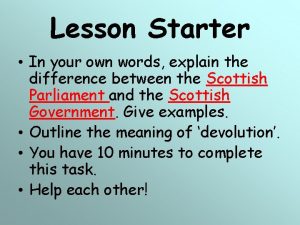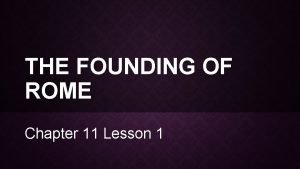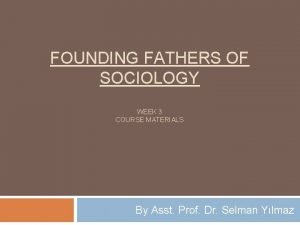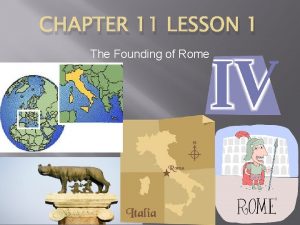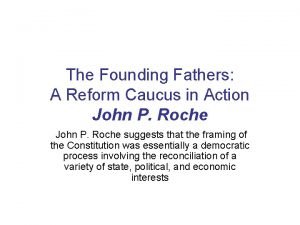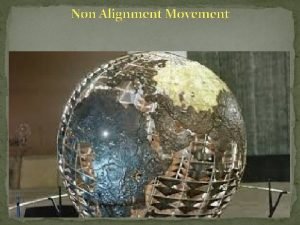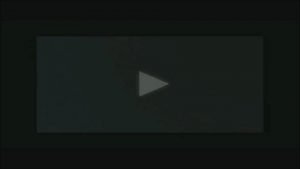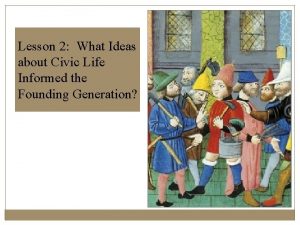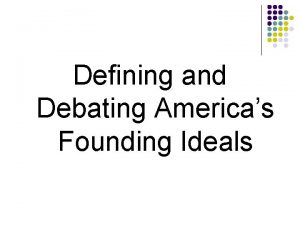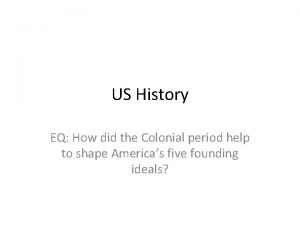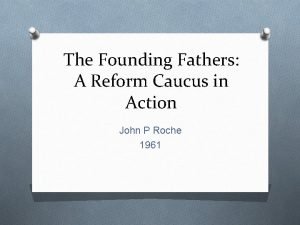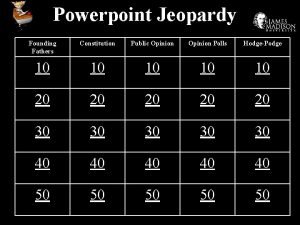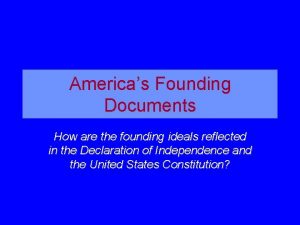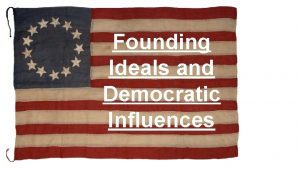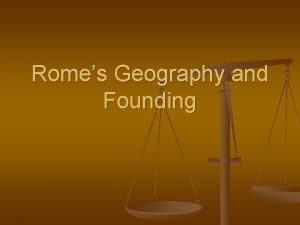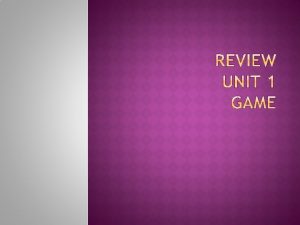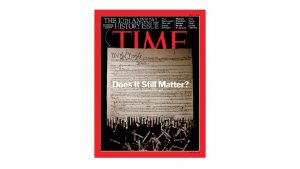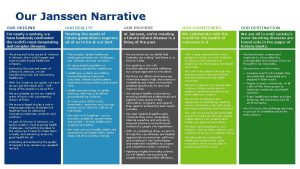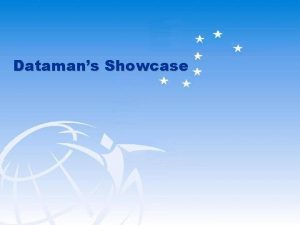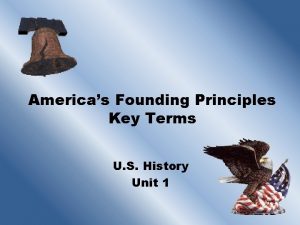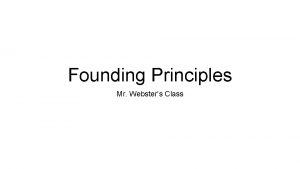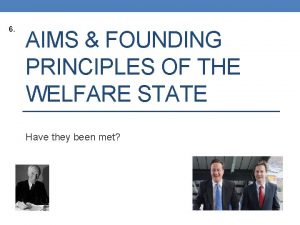Unit 5 The Founding Principles of Our New














- Slides: 14

Unit 5: The Founding Principles of Our New Nation CHAPTER 7 -1

I. A New Republic A. Republic = citizens rule through elected officials 1. State constitutions 2. Limited power 3. A central government

B. The Articles of Confederation 1. Basics ◦Created by the Second Continental Congress ◦Ratified in 1777 ◦“A firm league of friendship”

2. t STRENGTHS, congress can… WEAKNESSES, congress can’t… conduct foreign affairs collect taxes maintain armed forces foreign trade borrow $ or issue currency force states to follow their laws 3. No central govt 4. 9/13 = pass laws 5. 13/13 = amend AOC

II. Western Lands A. The Ordinance of 1785 1. Process to survey land north of the Ohio River 2. Divided land into townships (6 miles by 6 miles) and into 36 sections = each sold at public auction

B. The Northwest Ordinance, 1787 1. Lands north of Ohio River & east of the Mississippi River 2. Divided into 3 -5 smaller territories ◦ 60, 000 residents = statehood 3. Guaranteed freedom of religion & trial by jury 4. No slavery

C. Land Act of 1800 1. Easier for people to buy land 2. $2 per acre (had to buy at least 320 acres) 3. Pay half up front & the rest over four years

III. Problems A. Finances ◦ Money depreciated by 1781 ◦ Could not exchange for gold or silver ◦ Led to food riots & debt

B. Import Tax 1. Dpt. of Finance ◦ Led by Robert Morris ◦ 1781 proposal = 5% tax on imported goods ◦ 12 out of 13 states voted yes = fail ◦ 1783 proposal also failed

IV. AOC Weaknesses A. Shays’ Rebellion: 1786 -1878 1. Daniel Shays 2. Farmers fought > came home > not paid > taxed > farms taken > imprisoned > revolt

B. Slavery 1. 1774 PA Quakers = first ever anti-slavery society 2. North = not main source of labor 3. South = fear of economic collapse ◦ Manumission: VA law encouraging freeing enslaved people

V. Constitutional Convention A. Change AOC 1. 1786: Hamilton called for a convention 2. Philadelphia, PA 3. Motivated by Shays’s Rebellion

4. Began May 1787 5. 55 delegates ◦ All professions ◦ All ages (3 under 30, Franklin = 80) ◦ 26 had college degrees

6. 7. 8. 9. Public trust = Franklin & Washington James Wilson = details Gouverneur Morris = polished the final draft James Madison = kept records “Father of the Constitution”
 Since our founding
Since our founding Founding principles of the scottish parliament
Founding principles of the scottish parliament Guided reading lesson 1 the founding of rome
Guided reading lesson 1 the founding of rome Founding fathers of sociology
Founding fathers of sociology Chapter 11 lesson 1 the founding of rome
Chapter 11 lesson 1 the founding of rome The founding fathers a reform caucus in action
The founding fathers a reform caucus in action Nam founding members
Nam founding members Pamantasan ng lungsod ng marikina
Pamantasan ng lungsod ng marikina What philosophical ideas informed the founding generation?
What philosophical ideas informed the founding generation? Defining and debating america's founding ideals
Defining and debating america's founding ideals English bill of rights
English bill of rights The founding fathers a reform caucus in action
The founding fathers a reform caucus in action Founding fathers powerpoint
Founding fathers powerpoint America's founding ideals
America's founding ideals Thinking affects our language which then affects our
Thinking affects our language which then affects our

